
Concept explainers
To analyze:
The probable results in a community if all of the top predators were removed by hunting
Introduction:
Biological Community: It is a group of interacting populations that live in the same area at the same time.
Community interaction: Organisms that live together in a biological community constantly interact. Predation is one of the interactions between organisms where one organism (predator) pursues another organism (prey) to consume it for food.
Explanation of Solution
In any Ecosystem, there are different populations in a community with different food habits, and all organisms are interdependent for their survival. Hence, the
Green plants are producers, and all other organisms in any ecosystem are consumers, that is, they are dependent on other organisms for their food.
Predators, at the top level are the organisms that feed on the organisms of a lower level in any food chain.
When all the predators are killed by hunting, there will be an unchecked growth of the prey population. If the exponentially growing prey population is of herbivores (grass-eating animals), then in a short time they will deplete their food source that is grass and green plants.
Because of the high consumption by the large size of the prey population, green plants will start to deplete. These herbivores compete for food with each other and result in the death of many.
The change in the predator population affects the entire ecosystem and this triggers the event of Trophic cascade. Sometimes this trophic cascade permanently changes the diversity of any ecosystem.
Chapter 4 Solutions
Glencoe Biology, Florida Edition
Additional Science Textbook Solutions
Chemistry: The Central Science (14th Edition)
Physics for Scientists and Engineers: A Strategic Approach, Vol. 1 (Chs 1-21) (4th Edition)
Campbell Biology (11th Edition)
Chemistry: A Molecular Approach (4th Edition)
Organic Chemistry (8th Edition)
Campbell Essential Biology (7th Edition)
- For each response, you must first state whether you are accepting or rejecting that statement. Then,you must write a detailed explanation why you accept or reject each of the choices.PROBLEM: After playing beach volleyball on a hot summer day, Sam is sweating hard and feeling very thirsty. Afriend suggests drinking some beer to help his body replace the fluids it has lost. Which one of thefollowing statements contains the most logical and accurate response?A. Great idea! In addition to the fluid, the beer will replenish nutrients he's used up.B. Good idea! Not only will the beer replenish the fluids, but it will help remove excess salts that haveaccumulated.C. No way! Although the beer will replenish the fluids, it will cause removal of important solutes fromthe kidneys.D. No way! The beer will only intensify the problem of dehydration by suppressing ADH.E. No way! The beer may help replenish the fluids, but it will merely make him sweat even morearrow_forwardFor each response, you must first state whether you are accepting or rejecting that statement. Then,you must write a detailed explanation why you accept or reject each of the choices.PROBLEM: After playing beach volleyball on a hot summer day, Sam is sweating hard and feeling very thirsty. Afriend suggests drinking some beer to help his body replace the fluids it has lost. Which one of thefollowing statements contains the most logical and accurate response? D. No way! The beer will only intensify the problem of dehydration by suppressing ADH.arrow_forwardThis practice question is from the textbook "Genetics: From Genes to Genomes". It is chapter 13, question 9. a. Which two of the breakpoints could yield a deletion? b. Write the sequence and polarity of a 16-base primer that, in conjunction with primer A, will allow you to diagnose the presence of a deletion in a patient’s genomic DNA. The evidence should be positive, not negative. (That is, you will see a PCR product whose presence and/or size is specific to the deletion; the absence of a band is not informative.) c. Which two of the breakpoints could yield an inversion? d. Write the sequence and polarity of a 16-base primer that, in conjunction with primer A, will allow you to diagnose the presence of an inversion in a patient’s genomic DNA. Your answer should show the primer that would yield the longest possible diagnostic PCR product. Your primer cannot cross any of the red lines. e. Which two of the breakpoints could yield a reciprocal translocation? (Two possible answers exist;…arrow_forward
- MyoD is a transcriptional factor that acts specifically in muscle cells. It is hypothesized that Id proteins indirectly repress the transcription of muscle-specific proteins by inhibiting the function of MyoD. Which of the following are mechanisms by which Id proteins act as indirect repressors? (choose all that applies) Compete with activators for access to an enhancer. Bind the activation domain of an activator bound to an enhancer. Bind to activators and hold them in the cytoplasm. Form heterodimers with activators and lessen the homodimers of activators. Please explain each answer choice please.arrow_forwardWeek 4 Rodney Balbo's Imaging servicearrow_forward"Which of the following about transposable elements (TEs) is false?" RNA transposons move using an RNA intermediate. DNA transposons make up 3% of the human genome but are disruptive. Genes can move within the same chromosome via TEs. The Drosophila P element can only move in germline cells. Can you explain each answer choices pleae?arrow_forward
- What will control the rate of bioremediation of petroleum? (Choose all correct answers) The availability of the petroleum The temperature of the water The availability of oxygen The percent of the population that has degraded petroleum in the pastarrow_forwardWhich of the following would lead to a false negative result in a sandwich ELISA (the lab manual refers to this as a direct ELISA- also known as search for antigen)? Mark all correct answers. antibody was non-specific and bound to something other than the antigen of interest. too short of a duration when incubating the reagents in the plate. If there are multiple strains of the pathogen of interest and the antibody does not recognize one of the strains. Did not sample the correct bodily fluid/area to detect the antigen concentration of antigen was too low to detect in the patient sample. inadequate washing was performed after the enzyme linked antibody was allowed to bind. substrate was exposed to too much light reusing a pipette that was used to pipette a positive sample.arrow_forwardS. +1269 pts /1500 © Macmillan Learning 0 Resources Solution Penalized Feedback Try Again Draw the final product with stereochemistry and lone pairs. The leaving group has been pre-drawn for your convenience. +100 +100 : 0: + H,C- :0: : 0 0 : +100 +94 possible ✓ +100 K Attemparrow_forward
- +1269 pts /1500 © Macmillan Learning t/1188d950-dd73-11e0-9572-0800200c9a66/3045511b-267e-4a00-86ca-85dbc62ecb4e/6ac3a0c9-... a □ 出 All Bookmarks Due: Mon, May 26 Resources Solution Penalized Feedback Try Again KX Attempt 3 Draw the final product with stereochemistry and lone pairs. The leaving group has been pre-drawn for your convenience. :0: + нс H,C- :0: : 0:arrow_forwards. +1169 pts /1500 © Macmillan Learning 0 Resources Hint Submit Answer Step 3: This tertiary carbocation intermediate readily undergoes elimination with any weak base to form two possible products. + + H :0: H +94 possible 3a) Draw the minor organic product of elimination. Select Draw Templates More +100 +95 possible # C Major product + Minor product 3b) Draw the major organic product of elimination. Erase Select Draw Templates More C Erasearrow_forwardExplain the Science & Society on (with links and pictures): ---- Question down below Discuss the ethical, medical, and societal implications of using advanced genetic techniques?arrow_forward
 Human Anatomy & Physiology (11th Edition)BiologyISBN:9780134580999Author:Elaine N. Marieb, Katja N. HoehnPublisher:PEARSON
Human Anatomy & Physiology (11th Edition)BiologyISBN:9780134580999Author:Elaine N. Marieb, Katja N. HoehnPublisher:PEARSON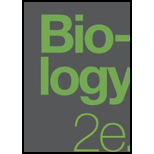 Biology 2eBiologyISBN:9781947172517Author:Matthew Douglas, Jung Choi, Mary Ann ClarkPublisher:OpenStax
Biology 2eBiologyISBN:9781947172517Author:Matthew Douglas, Jung Choi, Mary Ann ClarkPublisher:OpenStax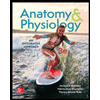 Anatomy & PhysiologyBiologyISBN:9781259398629Author:McKinley, Michael P., O'loughlin, Valerie Dean, Bidle, Theresa StouterPublisher:Mcgraw Hill Education,
Anatomy & PhysiologyBiologyISBN:9781259398629Author:McKinley, Michael P., O'loughlin, Valerie Dean, Bidle, Theresa StouterPublisher:Mcgraw Hill Education,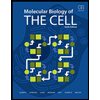 Molecular Biology of the Cell (Sixth Edition)BiologyISBN:9780815344322Author:Bruce Alberts, Alexander D. Johnson, Julian Lewis, David Morgan, Martin Raff, Keith Roberts, Peter WalterPublisher:W. W. Norton & Company
Molecular Biology of the Cell (Sixth Edition)BiologyISBN:9780815344322Author:Bruce Alberts, Alexander D. Johnson, Julian Lewis, David Morgan, Martin Raff, Keith Roberts, Peter WalterPublisher:W. W. Norton & Company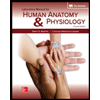 Laboratory Manual For Human Anatomy & PhysiologyBiologyISBN:9781260159363Author:Martin, Terry R., Prentice-craver, CynthiaPublisher:McGraw-Hill Publishing Co.
Laboratory Manual For Human Anatomy & PhysiologyBiologyISBN:9781260159363Author:Martin, Terry R., Prentice-craver, CynthiaPublisher:McGraw-Hill Publishing Co.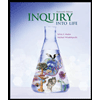 Inquiry Into Life (16th Edition)BiologyISBN:9781260231700Author:Sylvia S. Mader, Michael WindelspechtPublisher:McGraw Hill Education
Inquiry Into Life (16th Edition)BiologyISBN:9781260231700Author:Sylvia S. Mader, Michael WindelspechtPublisher:McGraw Hill Education





